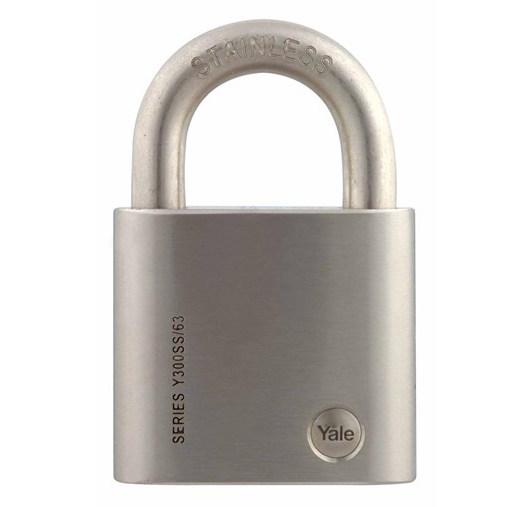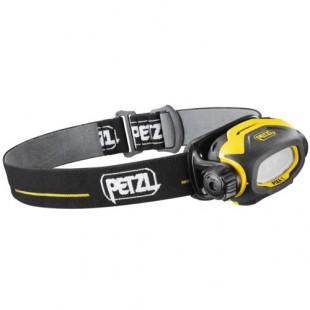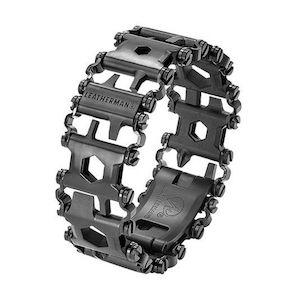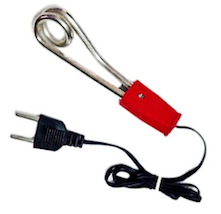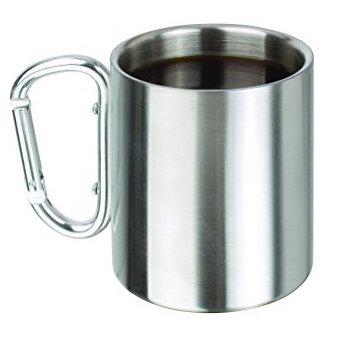The Ultimate Carry-On Packing List For Male Backpackers And Nomads (In-Depth)
In a related article, we laid out the 6 key principles that underlie smart, efficient packing. Knowing these principles and how to apply them will help you to pack everything you need for a great trip into a compact carry-on and avoid those nasty checked luggage fees and other problems that stem from travelling with too large a burden.
In that article we didn't cover the exact items you should pack in a carry-on and the justification for carrying them, so we've created this ultimate packing list for male backpackers to fulfill that very purpose.
Even though we believe in travelling on a budget and always finding inexpensive food, transport and accommodation, you'll notice as you go through this packing list that we don't always apply the same mindset to our actual travel gear. Why?
Because we believe in buying high-quality gear that’s both durable, compact and ultralight, and such gear often comes with a higher price tag.
You might pay more initially for such gear, but it will last longer and could save you more money in the long run. Compact and lightweight gear will help spare your back too and is one of keys to packing everything you need into a small carry-on.
Before we begin, we want to remind you that this packing list will best cater to the needs of travellers who prioritize efficient packing and minimalist, carry-on travel.
It is not for the traveller that is attached to material possessions to such a degree that he is willing to endure the burden of heavy backpack and spend hundreds of extra dollars in checked luggage fees.
The packing list is particularly well-suited to backpackers, digital nomads and other people travelling the world for extended periods. It should cover most of your needs while travelling in the majority of countries around the world. In countries with extreme climates, you may need to modify the list accordingly, particularly the clothing & footwear section.
You might think at first glance that all the items on this list could never fit inside a carry-on if you were to pack them all at once... and you'd be right! The list will cover you for a wide variety of travel situations around the world but for any given trip, you might only need to pack 50 - 75% of the items on the list, depending on the particulars. The idea is to pick and choose items from the list as you see fit.
Here it is then, the ultimate carry-on packing list for male backpackers and nomads.
Organization
Keeping all your stuff well organized is super important because it saves you having to rummage through a cluttered mess of items just to find the one item you currently need. In an organized backpack, you always know where items are and can access them quickly and easily. Good organization is all about putting items of similar function into their own discrete compartments or packages, keeping like with like. Preventing tangles or 'bird's nests' with unruly wires and charging cables is another important aspect of organization for travel.
Carry-on backpack
Before even considering what to pack, you need to choose the carry-on backpack you’re going to carry it all in.
You’ll get away with taking a 40-litre backpack onto many airlines but we think that 35 litres is just the right size for a carry-on traveller and backpacks of this capacity usually have dimensions that don’t exceed the limits for cabin baggage of the really strict airlines (like Ryanair).
There are many additional factors to consider when buying a carry-on backpack, like the material, compartments and pockets, zippers, durability, price and so on.
To make an informed decision, you can read our reviews of the 5 best carry-on backpacks for travel in this article.
Waterproof pouches
In most travel situations, a backpack rain cover and poncho combination will provide fairly adequate protection for your gear from most water-related threats, whether we’re talking about a sudden downpour, vehicle splashes from a puddle, the spray kicked up by a large waterfall and so on.
But if you expect to be out trekking continuously in torrential rain, traversing creeks, boating, swimming, kayaking, spending time in water theme parks etc. you might want to have some extra protection for your electronics and travel documents.
These YUMQUA waterproof pouches made from heavy-duty frosted vinyl (PVC) will protect your phone, tablet, camera, power bank, hard drive, passport, documents, maps and other items from water, sand, snow, humidity etc.
If you’re planning on doing any camping you could also use these pouches to ensure that your matches, tinder and emergency first aid kit stay dry.
The pouches will resist splashes and immersion in water for short periods, although you wouldn’t want to rely on them for diving or any other activity where they would be submerged in water for prolonged periods.
The cool thing though is that if you leave a bit of air inside the pouches when sealing them, they should float on the surface of the water.
If you were carrying the pouch by its lanyard and you capsized while canoeing or fell into a creek, you probably wouldn’t even need to worry about it going under.
The pouches come in a 3-piece set, with a small (12 x 16.8 cm), a medium (18 x 25 cm) and a large (24 x 31.2 cm) pouch, and each has a lanyard for easy carrying.
The pouches use a double-seal mechanism, with a ziplock closure near the top that is rolled downwards before securing it in place with a Velcro closure.
The small pouch is perfect for your smartphone, passport, point-and-shoot camera, power bank, hard drive etc. while the larger pouches could be used to protect small laptops, notebooks, tablets, maps, documents and other larger items.
Packing cubes
While most carry-on backpacks do come with several compartments and pockets to help with organization, there aren’t nearly enough of them to keep your items in proper order.
No matter how neatly you pack your items at the start of a trip, without something to keep them corralled they are bound to migrate all over the place inside your pack, leaving you with a jumbled mess that makes any individual item impossible to find.
That’s where packing cubes come in. A set of these will allow you to put your clothing, accessories, electronics and other travel items into their own separate “drawers” inside your carry-on so that you can always easily find what you’re looking for.
Packing cubes can also offer your clothes and other items some protection against dirt and moisture and may even help you to save a little space.
They can compress your clothes a bit and their building-block shape means that they can be stacked and fitted together neatly in your backpack in a way that uses the available space very efficiently.
You want to get packing cubes with a mesh screen on top so that you can easily see what’s inside at a glance, as well as for ventilation. The cubes should be made from a reasonably stiff material so that they hold their shape when you pack them. Handles on the sides also make it easy to pull them out of your bag.
The rule for filling packing cubes is to put like with like. You can designate one cube for shirts, one for socks and underwear, another for toiletries and so on.
Clothing should be rolled rather than folded inside packing cubes, so that you can easily grab the exact item you’re looking for instead of having to root through a stack of folded garments.
There are tons of different packing cubes out there and it can be hard to know which brand to go for. But as a carry-on traveller that’s packing light, you don’t need the really huge cubes or the ones with extra frills.
A set of smaller 11” x 6.75” x 3” cubes like this one from AmazonBasics will work great for carry-on travellers.
Space-saving compression bags
Space-saving compression bags can reduce the amount of space occupied by the clothing in your carry-on by up to 66%, or alternatively, they enable you to pack 3 times as many clothes into the same space as before.
To use a compression bag, you have to first place your clothes inside it (each item of clothing should preferably be individually rolled), zip up the opening and then use the bag to force out all the air that is trapped inside, which causes the entire package to shrink considerably in size.
One type of space-saving bag achieves the air removal by means of a hand-operated pump and valve, but we prefer the other, roll-up kind, where you squeeze out the air through a one-way valve at the non-zipper end of the bag by tightly rolling and pressing the bag by hand with the clothes inside.
The roll-up method requires a little bit more elbow grease than the pump method and may not achieve quite as much compression, but it’s simpler and doesn’t require you to carry the bulky handpump, which also takes up space and could break during your trip.
Whenever you open up these space-saving bags to take out an item of clothing, they will rapidly inflate again and the clothes inside will swell to their original volume, so just bear that in mind if you decide to grab something from the bag on the plane or bus.
Other than the obvious space-saving benefits, these bags also help to protect your clothes from odours, dirt, bugs, moths and dampness, and you can also use them to keep your dirty laundry separated from your clean clothes until you have a chance to get it washed.
Space-saving bags come in several different sizes but we like this 8-piece roll-up set by The Chestnut. The set includes 4 large (28 x 20 inch) and 4 medium (24 x 16 inch) size bags, and each bag has a double zip seal for air-tightness.
Depending on how much stuff you're packing and the size of your carry-on, the space-saver bags may be the key that allows you to just about fit everything into your bag.
But some of you may find that you now have extra space in your carry-on that you didn’t have before after compressing your clothing with the space-saver bags.
So if you're the latter person, what should you do with all the new space that’s at your disposal?
You might be tempted to use the extra space to pack more clothes and other travel gear that you couldn’t carry before, but that also means that you’re going to making your bag heavier, since the space-saver bags only reduce your clothing’s volume, but don’t significantly reduce its weight.
If you find yourself in this situation, I would recommend that you use it as an opportunity to downsize to a smaller carry-on, or just leave the extra space for items that you might only keep at the top of your bag temporarily during your trip.
Cable Winders
The charging and USB cables for phones, tablets, power banks, camera chargers, Wi-Fi range extenders, hard drives and other gadgets are notoriously difficult items to pack neatly.
They have a predilection for getting entangled with other cables the moment you take your eyes off them and they seem to always take up way more space in your electronics pouch/case than they should.
Luckily, a small contraption known as a cable winder provides the answer to this vexing problem and its primary purpose is to prevent your cables from creating a bird’s nest in your carry-on.
The Recoil automatic cable winder is the original and only spring-loaded cable winder on the market and it automatically winds up your cables without you having to do it manually.
If you get the large size (red colour), which we’ve linked you to, you can use it to store charging cables, USB cables, sync cables etc. There is also a medium and a small size, which are only really suitable for thinner earphone cables and the like.
All you have to do to wind up your cable with one of these is fold your cable in half, loop the bend in the cord around the small hook that’s attached to the circular inner part of the winder, give the cable a small tug and then release to watch the cable automatically wind itself up in an instant, almost like magic.
When done correctly, you should have a neatly wound up cable with just the two ends protruding from the cable winder.
To remove the cable from the winder, it’s just a matter of pulling on the two cable ends simultaneously at an upward angle and then unlooping the cable from the hook.
The only downside with cable winders like these is that they do take up a bit of space themselves, but then they do also help to save space by coiling cables so neatly.
The issue with this specific product is that it is quite pricey and probably worth more than most of the cables you’d be winding around it, so I would only recommend buying winders for your most expensive cables.
Electronics Case
An electronics pouch is needed for protecting and organizing your charging cables, wall chargers, external hard drives, Wi-Fi range extenders, USB sticks, card readers, memory cards and other small electronic items.
We use and recommend the AmazonBasics Universal Travel Case Organizer. It’s a 9.5” x 5.4” x 2” zippered pouch made from a fairly stiff material that offers the needed protection for your delicate electronics. Inside the pouch are two small zippered mesh pockets and a large open mesh pocket.
I'd like to point out that if you travel with a lot of electronics, this case probably won’t hold them all. We use the case for our hard drives and other delicate items and we carry another small pouch for our bulky chargers and cables.
Clothing & Footwear
In order to travel ultralight there's simply no way around it - you have to leave almost the entire wardrobe behind. Clothing is one of the heaviest (and bulkiest) items that you'll pack so you'll only have room for the bare essentials in a small carry-on.
In fact, you should try not to think in terms of 'packing' clothes at all. You should be wearing at least 50% of your total travel wardrobe as you board that plane.
The only downsides of the minimalist approach to clothing are that you won't have much choice regarding outfits and you'll probably have to do laundry more frequently. However, the latter issue doesn't apply as much if you aren't too fussy about always have sparkling clean clothes and even if you are fussy, doing laundry regularly will hardly cost you anything if you're willing to handwash your clothes.
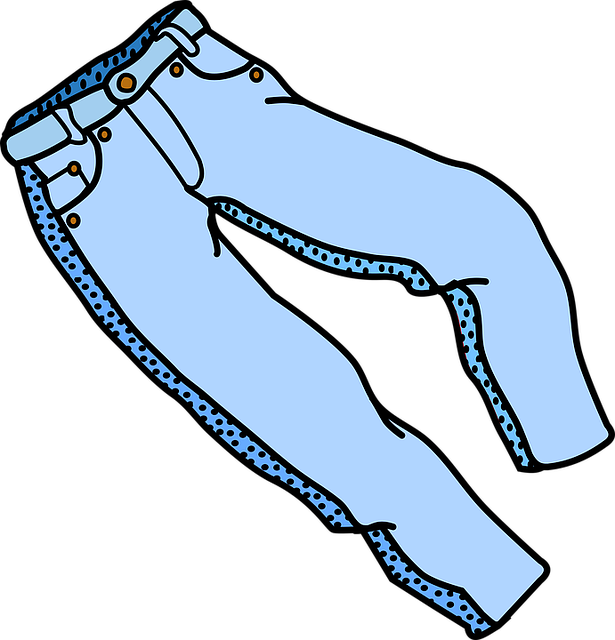
Long pants (x1)
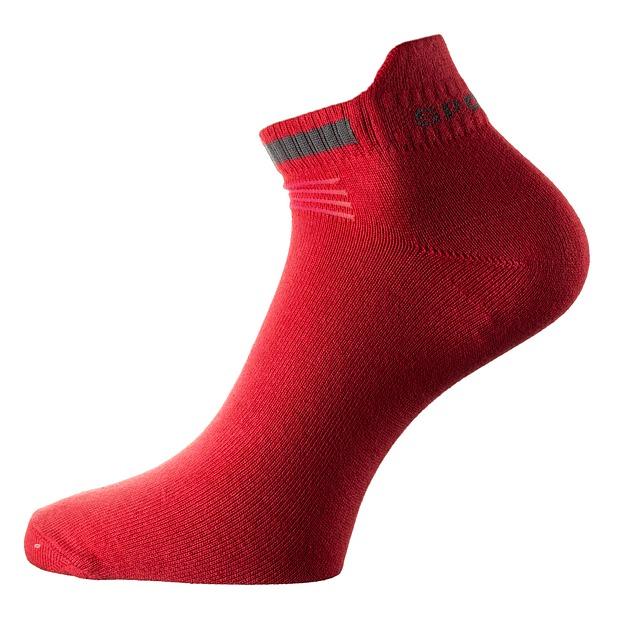
Cotton Socks (x2)

Thermal vest (x1)
Recommended fabric choices for travel clothing
Cotton clothing is lightweight, good at wicking moisture away from your body and doesn’t irritate the skin like wool and many synthetic fabrics do, so it’s a decent choice for travel clothing.
An even better fabric choice for most travel clothing however is Merino wool, but only if you can afford it, as these garments can easily set you back $100 or more.
Merino is a particularly fine type of wool (with a fibre diameter between 12 and 24 microns) that comes from a breed of sheep that originated in Spain around the 12th century and was further refined in Australia and New Zealand since the end of the 18th century, giving rise to the modern breed.
Because Merino is a type of wool it has a very high warmth to weight ratio and can continue to insulate and keep you warm even when it’s wet, unlike cotton.
When compared with cotton, Merino also has superior moisture-wicking, thermoregulation (keeps you cool when it’s hot and warm when its cold) and odor-resisting capabilities.
High-end merino wool garments can even feel more comfortable and soft against the skin than cotton due to the fineness of the fibres.
The only significant drawback (other than the high price) with Merino Wool baselayers and shirts is their durability or lack thereof; the thinner shirts in particular will usually develop holes after just a few seasons.
Underwear & socks
For carry-on travellers, I generally recommend travelling with two or three pairs of boxers/briefs and the same number of pairs of socks. I normally pack two pairs of very thin socks for hot weather and one pair of thicker socks for colder weather.
T-shirt (x2)
To save weight and space I recommend travelling with just two t-shirts - one will be packed in your carry-on and you'll be wearing the second one on the plane.
We generally recommend darker coloured t-shirts for most travellers, as they camouflage stains and won’t need to be laundered as often, which can get expensive.
However, if you know how to handwash your clothes and you’re willing to do it on a regular basis, light-coloured t-shirts will be okay to bring as well.
You might be tempted to pack lighter-coloured t-shirts to stay cooler if you’re expecting hot sunny weather during your trip, but the evidence suggests that it doesn’t really make much of a difference whether you wear black, white or other colours in between.
The factor that matters most for staying cool in the sun is actually the looseness of the garment rather than the colour, so make sure your t-shirts aren't too tight if you're expecting hot weather.
As for specific t-shirt recommendations, we like the concept behind Iconspeak t-shirts, which can help you to break down language barriers when you travel through the power of universally recognized icons.
The t-shirts display 39 different icons on the front and the idea is that you point to the one that most closely relates to your query when a local is having difficulty understanding you or is misinterpreting what you’re trying to say.
Locals can also point to any of the icons on your t-shirt to help you understand their response to your query, making it a very useful low-tech tool for two-way communication and mutual understanding in foreign countries.
Iconspeak t-shirts are made from 100% pre shrunk cotton or a cotton-polyester blend (depending on colour) and come in over a dozen colours. They are currently shipping worldwide for free too.
Light long-sleeve shirt (x1)
A thin long-sleeve shirt or thermal vest that covers your entire arms is one item of clothing I always recommend packing or even wearing when you’re setting off.
In cold climates a thermal vest is an important base layer that serves as part your multi-layer clothing system for staying warm.
In hot countries, a long-sleeve shirt can be used for sun protection, like when riding a motorcycle for prolonged periods in the intense midday sun. It protects your forearms from the harmful UV rays without causing you to overheat in the sun, like a thicker jumper might do.
You might also want to throw on your long-sleeve shirt in hot climates when temperatures drop in the evenings, during spells of bad weather, when you go up into the mountains, in heavily air-conditioned places etc.
Long pants (x1)
Even if you’re travelling in hot weather or tropical countries and you think that you'll only require a pair of shorts, we recommend that you always pack a pair of long pants, since there can still be times when you’ll get cold.
Even countries that are known for their year-round stifling heat can get surprisingly chilly when you go up into their mountainous regions and if you're forced to spend prolonged spells in air-conditioned environments like airports, restaurants, buses, trains etc. during your trip, you will be very thankful that you brought your long pants.
Also, if you plan to ride a scooter or moped during your trip you should always wear a pair of long pants so that your legs will have at least the bare minimum of protection from the asphalt if you have a spill.
Having a pair of long pants can also be crucial for gaining access to certain rooftop bars that insist on a formal or smart-casual dress code. During a recent visit to the Sky Bar at the top of the Lebua State Tower in Bangkok (for the breathtaking city views at night, not the exorbitantly priced drinks), we witnessed a few travellers in shorts getting turned away at the ground floor elevators, meanwhile an enterprising local was running a long-pants rental business close to the building's entrance to try to cash in on these suckers.
A pair of long pants is also important to have if you plan to attend any formal events, like a wedding, dinner party or funeral, during your trip.
We'd advise you to go for a fairly durable pair of pants that at the same time aren’t too thick or heavy, because you’ll hate wearing them in hot weather otherwise.
A pair of travel pants should also have deep zip pockets where you can keep your money, passport, room key and cell phone inside without fear of them accidentally falling out or being wilfully fished out by a nimble-fingered pickpocket.
One pair of pants that ticks many of the boxes for travel is the ExOfficio men’s nomad pants.
Made from nylon and weighing in at just 236 g (8.3 oz) they’re relatively lightweight compared to many other travel pants and they pack down small too.
The pants have a drop-in gadget pocket on the right leg and a zippered back pocket. They’re also breathable, wrinkle resistant, water resistant, stain resistant, quick-drying and UPF-rated for protection against harmful UV rays.
If you want better protection from pickpockets and petty thieves, we’d then recommend thePick-Pocket Proof® Adventure Travel Pants made by Clothing Arts.
To the casual observer these look no different to any regular pair of pants but their ordinary appearance belies their ingenious security features.
While most ordinary pants have one or two zip pockets that provide a single layer of security for your valuables, these ultra-secure travel pants have 11 multi-secure pockets, 5 of them triple secure and 6 double secure.
One of the five triple-secure pockets is specially designed for carrying your passport, so you can see how they’ve built these pants with travellers’ needs in mind.
The pants weigh 22oz and are made of Nature-LikeTM Nylon, a material that has the look and feel of cotton with all the benefits of Nylon.
They’re also water resistant, stain resistant, quick-drying, breathable, UPF 50+, fitted with high quality YKK zippers and have an adjustable waist and a diamond gusset crotch for greater range of motion.
Light shorts (x1)
A pair of lightweight shorts is not a strictly necessary item for carry-on travel but I still recommend packing a pair if you expect warm weather at any point during your trip.
Without a proper pair of shorts you’re restricted to your underwear when the weather is balmy or when you want to go for a swim, and wearing your tighty-whities in public could leave you feeling vulnerable or embarrassed.
Even if you’re wearing boxer shorts for underwear, they’re usually noticeably shorter than actual shorts, have thinner fabric and are liable to expose your junk to onlookers when you’re sitting or lying down, especially if you’re wearing a pair with an open fly (as opposed to a button-secured fly).
The most essential requirement in a pair of travel shorts is zip pockets. You’ll be wearing them a lot in hot countries and you don’t want your valuables to fall out or get pickpocketed just because you overlooked this essential feature.
Warm pullover/jumper/hoodie (x1)
For travel in general, you only need to pack or wear one warm item of clothing like a pullover, hoodie, jumper etc.
This will probably be the heaviest and bulkiest clothing item you’ll pack/wear but it’s worth bringing, because experience has taught me that you will need it at some point during your trip, even if you think you won’t.
As we’ve already mentioned, it can get cold even in hot countries for a variety of reasons like air-conditioning, elevation gain, seasonal weather patterns and so on.
I usually pack a warm hoodie myself, as it can double up as a small pillow for long train journeys, bus journeys and so on.
To turn your hoodie into a simple pillow, check out this photo-illustrated tutorial that demonstrates one way of doing it. You'll find that a hoodie can be turned into a surprisingly effective and comfortable pillow.
Buff headwear
A buff is a thin, lightweight tubular scarf made from a stretchy material that is primarily designed to keep your head, neck and face warm in cold weather or icy winds, although it is an incredibly versatile piece of headwear that can do so much more than just that.
A buff is also capable of protecting your face and neck from harmful UV rays and windblown sand and can save your lungs from inhaling dust and air pollutants.
It can be used to shield your face and neck from ferocious mosquitoes and other pesky bugs. There are buffs specially designed for this purposethat incorporate Insect Shield® Technology, which is a fancy way of saying that they are impregnated with an insect repellent.
A buff can also be used to cover up most of your face in travel situations when you want to keep a low profile. Maybe you’re travelling in a dangerous country where foreigners have been victims of terrorist attacks in the past and you don’t want to make it obvious that you’re an outsider.
A buff also works great as an eye mask (sleep mask) for getting some shut-eye in travel situations where you don’t have the aid of natural darkness to help you fall asleep, like when your hotel room has a street-facing window that is devoid of curtains or during an overnight train journey where the lights in the carriages are kept on all night long (we faced both of these situations in Myanmar).
Depending on the demands of the situation, you can wear a buff in all manner of configurations including “neckerchief”, “face mask”, “foulard”, “headband”, “balaclava”, “do rag”, “sahariane”, “cap”, “pirate” etc.
(The best way to familiarize yourself with the different ways of wearing a Buff is to watch this video from the product’s creator.)
For most travellers we recommend the 100% merino wool buff in the full-length tubular style (26.5” high x 9.5” wide) for its warmth, moisture-wicking, quick-drying and odor-resisting capabilities. This buff is also machine washable and made from 100% eco-friendly Merino Wool from humanely raised, non-mulesed sheep.
Lightweight rain poncho
Whether you’re trekking, camping, hitchhiking, driving a scooter or just walking on the city streets when the heavens suddenly open, a plastic poncho can save your clothes and the contents of your backpack from a good soaking during your trip.
Ponchos are longer than most lightweight rain jackets and can be pulled right down over your backpack so that your travel gear is fully protected from the rain (your backpack rain cover can't be fully relied on), although they won’t do much to keep your lower pants, shoes and socks dry.
We also like the fact that ponchos are so affordable, which is important, because we don’t experience rain frequently enough during our travels to justify an investment in expensive rain gear.
We prefer a poncho to an umbrella most of the time because they weigh less, pack down smaller, work better in strong winds or while driving a motorcycle (umbrellas can become uncontrollable or can get damaged) and they let us keep our hands free.
When we drove a motorcycle all the way from Saigon to Hanoi in Vietnam a few years back, we had to ride hundreds of kilometres on Highway 1 during a spell of freezing-cold, rainy weather and our ponchos saved us from developing hypothermia while driving.
We’ve often been able to buy ponchos in local shops whenever we’ve needed them, but on one particular occasion in Shillong, when in dire need, we were unable to find a single shop selling a poncho, which is why we recommend that you always pack one. You can keep a poncho in one of the side mesh pouches or in the space underneath the rain cover of your backpack so that it won’t use up any of the precious interior real estate.
When choosing a poncho it's generally a decision between the cheaper disposable kind and the slightly more expensive, but much longer more durable reusable kind.
The reusable ponchos are usually a bit heavier and thicker but they’re also a lot more durable and tear-resistant than the disposable type, and buying reusable products helps to reduce plastic waste, so we think the reusable ponchos make more sense overall.
We recommend the unisex, one-size-fits-all Anyoo Lightweight Rain Poncho, which comes in a mind-boggling range of colours. It weighs just 9 ounces (280 g) and is also very compact, fitting into a 9” x 3.15” drawstring carry-bag.
The material is 210T ripstop nylon with a PVC coating, making it resistant to tearing and strongly waterproof. The seams are also well-glued to prevent leaking.
The hood of the poncho can be tightened with a drawstring to better protect your face from the rain and it has six snap closures on each side that allow you to form sleeves.
This is also more than just a poncho, with a grommet in each of the 4 corners for rigging it up as a tarp shelter if you’re camping or trekking. You can also use it as a ground sheet if you’re having a picnic or just want a clean surface to sit down on.
General purpose shoes (x1)
Your content goes here...
Portable hair trimmer
For guys that shave, a portable cordless hair trimmer is a must-have implement when you’re travelling. Hair trimmers are lightweight and compact implements and the ones with self-sharpening blades will serve you for a long time before you start noticing any deterioration in their cutting efficacy.
They can save you a ton of money on visits to local barbers or on the recurring costs associated with using razors to shave. No more money spent on shaving foam, disposable razors or razor blade cartridge replacements.
Because they run on either rechargeable or replaceable batteries, cordless hair trimmers are no less convenient than razor blades, allowing you to effortlessly shave your facial and body hair on the go. They are not dependent on you having access to a wall outlet, except for charging them up initially.
With the rechargeable units you can normally get multiple shaves out of a single charge and the same is true for the disposable-battery-powered units.
The only guys a beard trimmer wouldn’t suit would be the ones that insist on always having a perfectly smooth, baby-face shave, which is only achievable with a razor blade. A beard trimmer will give you a fairly close shave, good precision and the ability to shave to different hair lengths, but it won’t give you a completely clean, smooth shave.
The Wahl Pocket Pro Hair Trimmer is an ideal portable hair trimmer for carry-on travellers and comes with a two year guarantee. This pocket-sized, rubberized trimmer only weighs 0.64 ounces and runs off a single AA battery, which will power it for several shaves. The trimmer comes as part of a kit along with three comb attachments, a cleaning brush and a small tube of hair clipper oil.
Nail trimmers
This one is pretty self-explanatory. If you don’t want your nails to turn into eagles’ talons during your trip you should pack a nail clippers. However, don’t worry too much if you forget to pack one, because this is one item that you can buy pretty much anywhere. We’d advise that you pack your nail clippers deep inside your carry-on, as nail trimmers do occasionally get confiscated at airport security.
Tweezers
A tweezers is always well worth packing in a carry-on. It weighs hardly anything, takes up minimal space and often comes in very useful during a trip for removing stingers, ticks and splinters embedded in your skin.
A tweezers is also a useful implement for removing small crumbs from your laptop keyboard, untangling necklaces, tightening those tiny screws on your eyeglasses and threading a needle when you’re stitching up your torn backpack or holey travel pants.
Female travellers will of course have many other uses for a tweezers, like plucking eyebrows and applying false eyelashes.
Tweezers fall into the same category as nail clippers, in that they’re usually allowed on planes, but on rare occasions you might get a draconian officer at airport security that decides to confiscate yours, so pack it deep in your luggage to be on the safe side.
Toothbrush & toothpaste
Some minimalist travellers will cut a few inches off their toothbrush handles to save space and reduce weight, but to me this is a bit like going to a lot of trouble to save pennies when you should be focusing your efforts on saving pounds. I say, leave your toothbrush handle intact.
I’m a big fan of these eco-friendly toothbrushes from Pavicico, with splinter-free, natural bamboo handles (no preservatives) and charcoal-infused bristles.
They feel a lot nicer to use than regular toothbrushes with plastic handles and their biodegradability means that they’re much better for the environment. Even the box that these toothbrushes come in is plastic-free and is made from recycled material.
Regarding toothpaste, many of the most popular brands in today’s market contain fluoride compounds, but this is a controversial ingredient.
The benefits of fluoride-containing toothpaste are disputed and likely to be negated by the harmful effects, so we’d advise you to opt for a fluoride-free, all-natural brand.
You can’t go wrong with Jason Powersmile Whitening Fluoride-Free Toothpaste, which not only has a wonderful peppermint taste and helps to brighten your smile, but is free of controversial additives like fluoride, parabens, artificial sweeteners, propylene glycol and sodium lauryl sulfate (the foaming agent in most toothpastes and another chemical with a bad reputation).
This all-natural toothpaste leaves out the harsh abrasives and instead uses gentle polishers like calcium carbonate, bamboo powder and baking soda (sodium bicarbonate) to whiten your teeth. It also contains botanicals like grapefruit and perilla seed extract to help fight damaging sugar acids and the dash of peppermint oil will leave your mouth feeling fresh and clean.
Last but not least, you can feel guilt-free brushing your teeth with this a cruelty-free toothpaste, since the company does not perform any harmful tests of its products on animals.
Multi-purpose soap
The problem with most of the soap you can buy on the road is that it’s just, well, soap. You can use it for cleaning your hands and your body but that’s about it. It violates the rule of packing multi-purpose items, a rule that you should always follow when travelling with a carry-on.
Another issue with ordinary soap is that it’s pretty heavy to carry considering how long it lasts, and often you might find yourself wondering if it’s really worth the extra weight it adds to your rucksack.
Luckily there is, in fact, such a thing as multi-purpose soap, which is far more useful than ordinary soap for carry-on travellers, as well as much longer lasting.
We’re referring specifically to Dr. Bronner’s liquid soap, which comes in nine different scents (Peppermint, Citrus, Green Tea, Rose, Lavender, Tea Tree, Baby Mild, Almond and Eucalpytus) and is so potent that a small 4 oz, travel-size bottle will last you for months on end. This soap is, in fact, 2-3 times more concentrated than most other liquid soaps, so you’ll only ever have to use a few drops diluted with water at a time.
Furthermore, the applications of this soap are almost endless. You can use it as a body wash, face wash, shampoo, bath soak, laundry detergent and dish soap. It can even be used as toothpaste, shaving foam, breath freshener, after-shave, deodorant, massage oil and much more.
Dr.Bronner’s liquid soaps are also eco-friendly, coming in post-consumer recycled (PCR) plastic bottles with paper labels. They are fully biodegradable, being made from 90% organic and 70% certified Fair Trade ingredients sourced from India, Sri Lanka, Israel, Palestine and Ghana. The soaps are saponified from a blend of organic oils, namely coconut, olive, jojoba, palm kernel and hemp oils.
As you might have guessed by now, these liquid soaps are completely free from synthetic foaming agents, preservatives, thickeners, whiteners, dyes, fragrances etc. and many users have reported that their acne, eczema, dandruff and other skin conditions magically cleared up after they started using it.
Electronics
Electronic devices like cameras, laptops and tablets can be pretty bulky and heavy items to pack. That's before you even add in the necessary chargers, adapters, cables and accessories for them. You therefore have to prioritize ultralight, compact and multi-functional gadgets if you want to travel with just a carry-on.
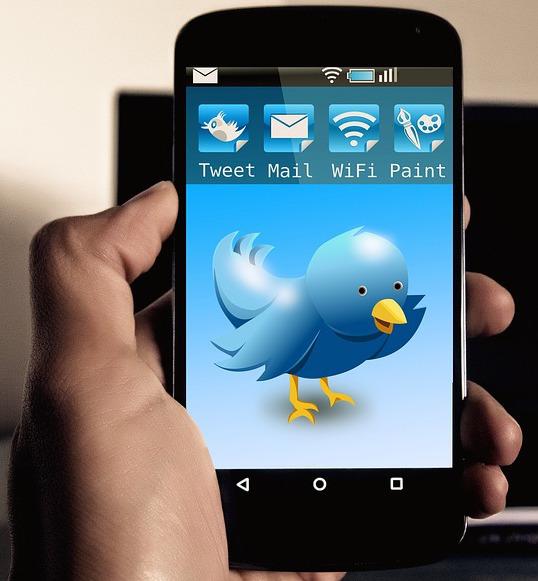
Unlocked Smartphone (x1)
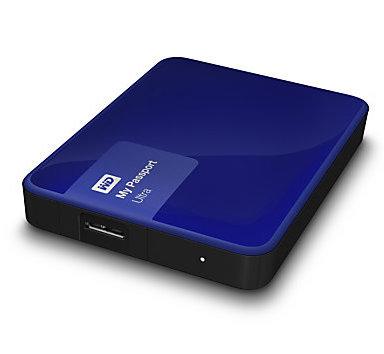
External Hard Drive (x1)
Unlocked smartphone
Your content goes here...
Ultrabook laptop
Your content goes here...
DSLR camera
Your content goes here...
External Hard Drive
Your content goes here...
USB flash drive
Power Bank
Accessories
These are items that come in very useful when you're travelling. They aren't all totally essential items but they'll help protect you from theft, save you money and solve other travel-related problems that crop up from time to time. We use all of these items frequently enough to justify carrying them.
Luggage lock
If you were to calculate the cost of replacing all the items that go into the carry-on of a well-equipped traveller, it would probably amount to well over $2,000. Hell, even an Apple laptop or a fancy DSLR camera alone could be worth more than that.
When trying to guard that kind of loot, it helps if you have a way of making it more difficult or less attractive for petty thieves to steal from your backpack in crowded situations or when you’re distracted around people. One of best deterrents for pilferers and pickpockets when you’re travelling is a humble luggage lock.
For opening and closing their larger compartments most backpacks are fitted with dual zippers, which can be locked together with a luggage lock by threading the shackle of the lock through the holes in either the zipper pulls or the zipper sliders.
While this is far from a foolproof security system (a thief can still slash open your bag with a blade, puncture the zipper with a pen or other pointed object, crack open the lock or even just swipe the entire bag), it usually doesn’t have to be; you normally only need to make it challenging enough for thieves to decide that you’re not worth the trouble.
Even if a thief still decides to have a go at your carry-on, a luggage lock will slow him down and increase the likelihood that you or someone else will notice what he’s up to before he has infiltrated your luggage.
When choosing a luggage lock, there are a few variables to consider, like whether you want to go for a 3-dial (1,000 possible combinations) or 4-dial (10,000 possible combinations) combination lock, a keyed lock, a TSA-approved lock, a rigid shackle, a flexible cable shackle and so on.
Another important consideration is how many compartments of your backpack you intend to keep valuables in, as you may need to buy a separate luggage lock for each. You could also just take the “put all your eggs in one basket” approach and pack every valuable item you’re carrying inside one secure compartment of your bag.
Regarding TSA-approved luggage locks, these are usually only required if you’re travelling with checked luggage, because it means that the TSA (Transportation Security Adminstration) can open the lock using a special key they possess, should they wish to search your luggage. Once the inspector is done searching, he can replace your luggage lock as if it was never opened. If you did not have a TSA-approved lock and a TSA inspector decided to search your checked baggage he would probably be forced to cut open the lock with bolt cutters to gain access to your bag, causing you to lose the lock.
When travelling with just a carry-on, you don’t need to worry about whether your luggage lock is TSA-approved or not, because if a staff member at airport security wants to examine the contents of your bag, you are there to open the lock for them, or you can just leave the lock off when passing through security.
For most travellers we recommend the TSA-approved Cable Luggage Lock from Forge.
This is a tough and durable 3-dial combination lock made from a special zinc alloy, which has high impact strength but is also lightweight for travel. Forge is so confident in the strength of their luggage locks that they offer an unconditional lifetime guarantee and they even challenge you to find a way to break them.
The lock uses a thin yet strong, flexible, sheathed, braided steel cable for the shackle, so that it can be easily threaded through a wide variety of zippers, hard case lock holes and other luggage fixtures. When in the locked position, the shackle can handle a pull weight of over 220 lbs, which is 70 to 100 lbs more than what most other luggage locks can take.
The high-contrast (rather than chrome) dials display the white numerals against a black background for easier visibility in bright fluorescent lighting, like that found in airport baggage terminals.
Setting a new combination on the lock can be easily done by flipping the small recessed switch/lever on the lock to the right using a pen, choosing the new combination and then flipping the switch back to the left again. Not only does this mechanism make setting the combination a breeze, but it also makes it very difficult to accidentally change the combination, which can be an issue with some locks.
The Travel Sentry Logo displayed on the lock lets TSA inspectors know that they can use their special key to open the lock via the keyhole on the bottom. The lock is also key retaining, which means that a TSA inspector has to re-lock your luggage in order to remove their key, so if you’re travelling with checked luggage, you won’t have to worry about your bag being left unsecured after an inspection.
Travel padlock
Not to be confused with the luggage lock described above, a travel padlock is somewhat larger and more robust, and is mainly used to secure your valuables inside rooms, cupboards, drawers and lockers at your lodgings. It can be indispensable in the following situations:
- When the door to your private room can only be secured with a padlock (this kind of door-locking system is very common in some countries) and you know you can’t rely on the lock provided for free by the owner or staff, since anyone else could have a spare key and it’s probably a low-quality padlock anyway that a determined thief could easily pick or force open.
- When the lockers at your hostel can’t be secured without a padlock but the hostel requires you to have your own or you don’t trust the padlocks they provide.
- When you want to use the lockers at a gym or swimming pool during your trip and a padlock is required
- When you want to lock valuables away inside a padlock-able drawer, cabinet, cupboard or wardrobe in your room for an additional layer of security. A small length of chain may be required in conjunction with the padlock for securing the twin doors of some cupboards via the door handles.
There are many factors to consider when buying a padlock for travel, like the design, size, weight, body material, shackle material, shackle thickness, locking mechanism, key profile, keying type, pin material, security features, security rating, weather resistance and much more. We wrote an in-depth guide to choosing a travel padlock if you’re interested in knowing everything about locks.
The short answer is that we recommend the Abus 75/50 chrome-plated all-weather padlockfor most travellers. Abus is a German brand that has a solid reputation for manufacturing high-quality preventative security technology.
This padlock has a chrome-plated body made of solid brass with a hardened stainless steel shackle. Weighing in at 290 g (0.65 lbs) and measuring about 7.7 cm x 5.0 cm, it’s just the right size padlock for travel; not too small and dainty, not too big and heavy.
The shackle diameter is 5/16” or just under 8mm, which will fit most lockers in pools, gyms and hostels, and will fit pretty much all hasp and staple fixings on doors.
The lock uses a dimple pin-tumbler mechanism, which is less common than the standard pin-tumbler mechanism, so most amateur lockpickers will be thrown off by it. The lock also has a paracentric keyway, which makes it very tricky to manipulate the pins inside the barrel without very specialized tools. It also employs passive security pins, which serve to further frustrate intruders. The lock is also pretty much immune to shimming attacks because the shackle is held in place at both ends by ball bearings.
The Abus 75/50 is also a highly corrosion resistant padlock, being designed for securing vehicles and boats in outdoor use. I've had the problem of cheap padlocks rusting after some time on the road in the past, but you won’t ever have to worry about this lock rusting inside a damp backpack or when you’re staying in a cabin, hut or other room where the outside of the door is exposed to the elements.
Although there are more sophisticated, high-security padlocks out there than this, many of them are too heavy, too expensive or are just overkill for travel, often being much more secure than the fixing they’re going to be attached to. The Abus 75/50, on the other hand, is excellent value for money and will provide the level of security that most travellers are going to need during their trip.
Water purifier bottle
I always recommend that travellers carry a refillable water bottle to save money (and reduce your dependency) on branded bottled water and to do their bit for the environment.
You can fill up your reusable bottle for free or for just a few pennies whenever you have access to a potable water source like a drinking fountain, water dispenser machine, water cooler, water pitcher (in a restaurant), natural spring, roadside spout, water refill station (these are common in many developing countries) and so on.
A reusable water bottle doesn’t even have to consume any of the valuable space inside your backpack if it has exterior mesh pockets on the sides or if you can figure out a way to attach it.
While it is possible to reuse a disposable PET bottle that you buy during your trip, this isn’t such a great idea, as such bottles are not designed to last for much longer than a single use.
They’re made from a thin plastic that can easily get crushed out of shape (and when that happens the capacity of the bottle is compromised) and if any scratches develop on the inner surface of the bottle with repeated use, they could become a breeding ground for bacteria.
Better to travel with a permanent reusable water bottle made from a thicker, more durable, BPA-free plastic. But why just carry an ordinary useable water bottle when you could carry one that integrates a filtration system?
A decent filter will remove debris, turbidity, harmful pathogens, disagreeable odours and funny tastes from the water you’re drinking and it enables you to also refill your bottle from sources that are suspect or decidedly non-potable, which further reduces your dependency on bottled water.
Having a filter means that even tap water and muddy rain puddles in countries like India can be turned into potable water, and it also means you can drink the water from untrusted creeks, lakes, stagnant ponds, seepages etc. when trekking or hiking. You no longer have to lug gallons of heavy water up mountains or through jungles, like those other backpackers who don’t have the means to purify the water sources encountered on the trail.
While there is an initial cost in buying one of these filter bottles, they normally pay for themselves after just a couple of weeks, considering how much they save you on costly bottled water.
Our preferred water filter bottle for the road is the Aqua Pure Traveller Water Bottle from UK-based company Pure Hydration. This is one of several filter bottles that we reviewed fully in our comprehensive portable water purifiers comparison guide.
Water storage bladder
Sometimes during a trip there are times when you need to be able to carry or store more water than your reusable water bottle will hold.
For example, when you're on a long trek or hike with very few water sources along the trail or when you’re sightseeing or travelling for hours in the sweltering heat without the benefit of air conditioning.
Having extra water storage capacity can also be useful for whenever you come upon a free or extremely cheap source of drinking water (e.g. a reverse osmosis machine) and you want to bring as much water as possible back to your hotel room, so that you don’t have to keep making frequent, time-wasting trips to the water source.
Such scenarios call for extra water-carrying capacity, but how can you always have that at your disposal during a trip without always carrying around empty, bulky, cumbersome water bottles?
The solution is to carry a collapsible water bladder. These roll up extremely small, weigh virtually nothing when empty and will allow you to carry or store an extra 2-3 litres of water (depending on the size of the bladder you go for) whenever the situation demands. A water bladder can also be inflated and used as a very comfortable improvised air pillow, which is another good reason to pack one.
When we travel we normally carry a 2-litre screw-top collapsible water bladder made by Platypus, one of the leading brands for this type of gear. This one only weighs 1.3 ounces and rolls up so small that it easily fits inside your pocket when empty. It has a food grade polyethylene lining too, so that it doesn’t retain flavours or taste of plastic, and it’s free of BPA, BPS and phthalates.
The stable base allows the bladder to stand upright when filled, so you won’t have to worry about it falling on its side and leaking when you’re using it to store extra water in your hotel room. It can also be paired with popular water filters like the Sawyer Squeeze and the brand’s very own GravityWorks filter.
Portable immersion heater
Sometimes you get sick of dining out every evening or constantly buying overpriced hot drinks when you’re travelling. Unfortunately, the problem is not always so easily remedied, since accommodation with cooking facilities can often be hard to come by on the road.
Even if you just had a way to boil water, you could cook a few basic food items and prepare your own tea, coffee and other hot drinks. Some rooms do come equipped with kettles but you can never rely on yours having one and if it’s more than a hot drink you’re after, a kettle isn’t the best tool for the job.
Luckily, there’s a little-known, highly-portable appliance that lets you boil water (and therefore cook) from the comfort your hotel room or any other time you have access to a power outlet. The appliance I’m talking about is portable immersion heater.
It’s basically just a U-shaped metal rod that’s formed into a coil at the business end and it utilizes the same scientific principle as the heating element of an electric kettle, where an electric current passes through the coil and is converted into heat energy as it does so.
We have used our immersion heater to boil water in ceramic mugs, drinking glasses and metal cups, but mostly we use the stainless steel cooking pot that we carry with us everywhere (see below) for this purpose.
You can use an immersion heater to make tea, coffee and hot chocolate. You can also heat soup and cook noodles, eggs, pasta, potatoes, boil-in-the-bag foods and many other things that require a simple boil to prepare.
Heating rods are also great for purifying suspect municipal tap water by boiling and can therefore help you to avoid the expense of bottled water when you’re travelling in countries where it’s normally recommended to filter or boil the tap water before drinking.
One safety tip we should mention is that you should never switch on a heating rod before it’s fully immersed in the liquid that you’re trying to heat (you’ll blow the fuse) and the plastic part at the top of the unit should be kept well above the water line, so don’t immerse the rod too deep.
Our portable immersion heater of choice is the Norpro Instant Immersion Heater. This 300 W/120 V, nickel-plated brass heater is very compact and weighs only 4 ounces, so it’s ideal for carry-on travel and it won’t be confiscated by airport security.
Note that if you plan on using this and other electrical heating devices in countries that use 220-240 V, you’ll require a voltage converter (see the electronics section for our recommendation) to avoid frying your devices.
Headlamp
Many travellers don’t think of packing of a headlamp unless they plan to do outdoor activities like camping, trekking, stargazing and spelunking during their trip.
But a headlamp can also be of great service during more mundane travel situations, like when you’re trying to read in your hostel dorm bed at night, or navigate to the communal bathroom outside your bedroom in the dead of night during a power outage.
Yes, smartphones do have inbuilt flashlights but these obviously aren’t as effective as the powerful beams of purpose-built headlamps.
A smartphone flashlight also can’t be used hands-free (not ideal when you’re trying to use the bathroom, cooking over a campfire or when you need the use of your hands for climbing, crawling or shimmying) and it drains your precious battery life rapidly.
In a situation where you’re fumbling around in the dark, the last thing you want is for your phone to die and plunge you into oblivion, leaving you stranded and unable to call anyone for assistance.
When deciding on a headlamp for travel purposes there are several important factors to take into consideration, such as the weight, durability, battery life, beam modes, lumens, waterproofness and special features.
The headlamp we recommend that performs well on most of these variables is the Petzl Tikka. Available in four colours (red, black, green and blue), this is a compact, lightweight headlamp that only weighs 2 oz (less than 3 oz with batteries included), which makes it ideal for minimalist travellers.
The lamp emits a wide-angle beam with a max output of 200 lumens (a typical LED headlamp only puts out around 50-100 lumens) and comes with five different lighting modes so that you can have optimal lighting for every situation. The white beam can be adjusted between low, medium and high power modes and you also have a red beam mode and red strobe light mode to boot.
On high power mode (for illuminating faraway objects) the beam range is 60 metres, on low power mode (for immediate surroundings) its 10 metres and on red beam mode (for preserving night vision or to avoid blinding members of a group) the range is 5 metres.
The fully adjustable, reflective head strap is comfortable to wear and features an integrated, low-profile, 100- decibel safety whistle for emergencies. The lamp itself is splashproof (IPX$ rated) and is fitted with a single button for turning it on/off and for cycling between the various beam modes, making it relatively easy to use compared to many other headlamps.
The Petzl Tikka runs on three standard AAA batteries and boasts an impressive 240 hours of battery life on low power mode and 60 hours on high. It’s also compatible with the Petzl CORE Li-ion rechargeable battery, which is sold separately.
One neat feature of this headlamp is its glow-in-the-dark locator (a phosphorescent ring around the bulb), which self-charges while the headlamp is in use and allows the lamp to be easily located in the dark if you suddenly get caught off guard (like when a power cut strikes).
Earplugs
A pair of decent earplugs is a must on any traveller’s packing list. They can be used to protect the ears from the intrusion of water, dust, foreign bodies and even strong winds, but when you’re travelling the most common use for them is to block out loud or unwanted noises so that you can sleep or even read a book in peace.
When armed with a pair of earplugs, you can get some shut-eye on a plane even with that baby screaming in the seat behind you and you won’t ever have to be woken up in the early hours of the morning when construction workers are banging on the walls outside your hotel room.
If you’re a light sleeper that likes to stay in hostels, a pair of earplugs will block out the sounds of snoring dorm mates or rowdy, drunken guests entering the dorm at 4 a.m after a wild night of partying.
Loud, thumping music that keeps blaring until the break of dawn can also disrupt your sleep if your guesthouse, hostel or hotel is located close to the centre of the nightlife in a popular tourist destination.
To use an example, in the backpacker nightlife hub of Khao San Road in Bangkok, most of the cheap hostels are just a stone’s throw from the two loudest and most late-opening bars on the street, and I can tell you from personal experience that you don’t want to be staying in hostels like these without a pair of earplugs.
Traffic noise can also keep a traveller awake at night when earplugs aren’t to hand, especially when your room fronts a busy main road and you have to keep the windows open all night to prevent suffocation. Noise pollution from low-flying airplanes and trains can be equally bothersome if you’re staying close to an airport or a railway track.
If you’re travelling in a country that has a significant Muslim population, a pair of earplugs can also help you to contend with the noise pollution created by mosques during the call to prayer, which occurs five times daily.
During our tour of Java, Indonesia a few years ago, we paid a visit to a hill-station called Bogor, where we made the mistake of staying in a guesthouse abutting a small mosque. Every morning at approximately 4 a.m we would be jolted awake as the mosque loudspeakers would obnoxiously begin to blare out the fajr (dawn) prayer at obscene volume levels that were sufficient to rattle the windowpanes of our room. If only we had had the foresight to pack a pair of earplugs that time.
Obviously, not all earplugs are the same. You need to find a pair that fits your ears properly and that doesn’t cause itching or discomfort. The material (wax, foam, silicone etc.) is something to consider, as is the noise reduction rating (NRR).
We recommend Hearos Xtreme Protection Ear Plugs for most travellers. Made from hypoallergenic, polyurethane foam, these earplugs are super soft and comfortable to wear. They are also extremely effective at cancelling noise, having a 32 NRR (noise reduction rating), with 33 NRR being the highest possible grade for foam earplugs.
The plugs can be rolled between your thumb and index finger before insertion and once in place they expand to form a strong seal with your ear canal, blocking out noise very effectively. You’ll get several wears out of each pair and when they stop expanding enough to fit your ear snugly you'll know it’s time to swap them out for a fresh pair.
Spork (multi-functional eating utensil)
Dining out for every single meal during a trip can get really expensive, so you’ll probably want to buy food from grocery stores and local fruit & veg markets (and maybe cook a few of your own meals) at least now and again.
And unless you’re only buying ready-to-eat convenience foods that don't require any eating utensils or come with disposable plastic ones (which suck for the environment), you’ll probably require your own eating utensils at some point, especially if you’re eating foods like noodles, pasta, rice, soup, breakfast cereals, yoghurt and ice cream.
Yes, it is possible in many cases to source a spoon or fork at your accommodation, but you can never count on it, especially if you're cooking in your room with a stove or an immersion rod because a kitchen is not provided. And what if you want to have a little picnic in the park or eat a messy takeaway on the go (where the restaurant forgot to pack disposable cutlery)?
The solution is obviously to travel with your own cutlery, but traditional cutlery sets are not minimalist, not even the lightweight plastic ones. What we recommend instead is to carry a single eating utensil known as a spork.
The term spork is a portmanteau of the words “spoon” and “fork”. This hybrid form of cutlery comes in a few slightly differing designs, but all follow the same basic concept of combining a fork and a knife into one multi-purpose eating utensil.
One type of spork is basically just a spoon with tines carved out of the tip of the bowl, while another popular design has a spoon bowl and the tines of a fork at opposite ends of the same handle. Both designs ultimately serve the same purpose.
Sporks have proven to be a very popular implement among minimalist trekkers and campers but, as we reasoned above, they are also useful for the general traveller, even if no outdoor activities are on the cards for your trip. Travelling with a spork means that you’re never caught off guard when you need a spoon or fork (or even a rudimentary knife as we'll see below) during your trip.
We recommend the original Light My Fire Spork.
This super lightweight spork weighs only 0.3 oz (9 g) and is made from Tritan, a BPA-free, food-safe plastic that won’t melt in boiling water and is dishwasher safe. It has a spoon at one end and a fork at the other. One of the fork tines even has a serrated edge, so you can use it as a knife for cutting fruit, cheese, vegetables, meat and so on. There’s even a lefty version of it for people that are not right-handed.
Compass
Prefer to live your life by the compass and not by the clock? Then pack a magnetic compass. In all seriousness though, you should always pack a physical compass if you’re planning to stray from the beaten path during your trip, regardless of the activity involved.
In remote terrain where there are often no roads, man-made trails, signs or navigation aids other than the sun, moon and stars, having a compass and knowing how to use it could prevent you from getting lost and could save your life. Even when you’re sticking to man-made trails, it’s often easy to stray from them, especially if they’re disused or aren’t well-marked.
Even if you’re not a very adventurous traveller and you have no intentions of leaving civilization (at least not without a local guide) at any point during your journey, you never really know what destiny has in store for you and when you might need a compass to help you find your way. Sometimes the journey chooses the traveller and not the other way around.
Although advancements in technology have provided us with GPS receivers, smartphones with magnetic sensors (magnetometers), navigation apps and other electronic navigation aids, the humble magnetic compass is still an essential item in a traveller’s carry-on.
Yes, it’s certainly true that electronic navigation tools can be incredibly powerful. GPS receivers, for example, can be loaded up with hundreds of maps. They can pinpoint your location and altitude to a high degree of accuracy, suggest routes, calculate distances and leave breadcrumbs in case you need to retrace your steps.
But GPS receivers are dependent on batteries, are prone to mechanical failure, can lose signal (in buildings, caves and even under dense tree cover) aren’t so compact or lightweight and are also relatively expensive (usually $100+). Smartphones face some of the above limitations as well and their compass apps are notoriously finicky and unreliable.
A magnetic compass, on the other hand, is an inexpensive (usually starting at around $10), lightweight, pocket-sized instrument that’s pretty reliable for navigating most of the time, as long as you’re not near a magnetic anomaly and you keep the compass away from metal objects like keys, zippers, wristwatches and so on.
I’m not saying that you shouldn’t use electronic navigational aids at all during your trip – they can be a great companion to a physical compass – but you need to carry a compass as a backup in case the other tools betray you.
We recommend the D-Tuck Pocket Compass for most travellers, which comes with a 1-year unconditional warranty. This pocket-sized (1.97” x 0.63”), lightweight compass has a very attractive, vintage look with its shiny, gold-plated metal shell and retro design. The hinged metal lid closes tightly, protecting the face inside when not in use. A small metal ring is fitted to the side of the compass so that you can easily attach a lanyard.
The compass dial is luminescent (emits its own light) after absorbing natural light during the day, so it will glow in the dark or in low-light conditions for easy reading of the numbers. The magnetized needle is accurate and allegedly still works in temperatures as low as -50°C, although I wouldn’t blindly trust it in conditions as extreme as that. Overall, this is a great little compass that’s not overladen with too many features and is superb value for money.
Binoculars
Your content goes here...
First-aid kit
Your content goes here...
Sewing kit
We recommend that you assemble some kind of a basic sewing kit for yourself if you’re going to be on the road for any longer than a month. If any of the stitches in your backpack rip or you need to stitch up a hole in your travel pants (a stitch in time saves nine) during your trip, a sewing kit will save you from having to replace your gear prematurely.
Sewing is a highly therapeutic activity to boot, as it causes your mind to become so focused on the task at hand that you temporarily forget about all your worries and frustrations in life. If you don’t know how to sew, then learn! It’s an awesome life skill that’s well worth acquiring.
A good travel sewing kit should include a few sewing needles of different sizes, a few spools of strong sewing thread, a thimble, a needle threader, a thread tweezers, a small pair of scissors and maybe a few buttons. If you don’t want to assemble your own, you can buy pre-assembled kits like this compact sewing kit from Clover.
Electrical tape
A small roll of electrical tape often comes in handy on the road for repairing or reinforcing fraying charging cables, which can even become a potential fire hazard.
This is a common problem with Apple charging cords in particular; at the cable ends the outer coating can often tear and fray because of the extreme angles that the wire is bent to when charging. A quick fix is to wrap the damaged areas with electrical tape or even better, before they begin to show signs of stress (prevention is better than cure).
We’ve also used electrical tape on several occasions to patch up small holes and tears in damaged mosquito box nets that we’ve had to sleep under in bamboo huts, rural homestays and other rooms that had issues with the flying vampires. Patching up the net with electrical tape allowed us to have a good night’s sleep as opposed to being eaten alive.
We even used electrical tape during our trip to the Andaman & Nicobar Islands to help protect our carbohydrate-laden provisions (bread, packets of instant noodles, jam etc.) from the legions of hungry ants that kept invading our hotel room in Port Blair, the archipelago’s capital city.
We had unsuccessfully tried to protect the food from the ants by placing it inside a sealed tupperware box, but we discovered that the ants were small enough to squeeze through the tiny gap between the rim and the plastic lid. We were able to solve the problem in the end by sealing all around the edge of the lid with electrical tape, which left the ants scratching their heads.
-lw-scaled.png.png)
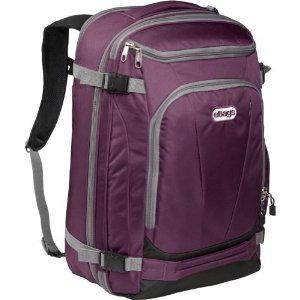
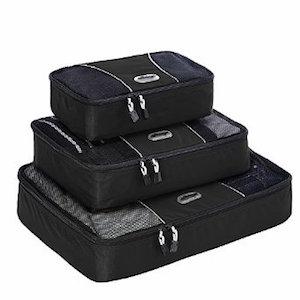
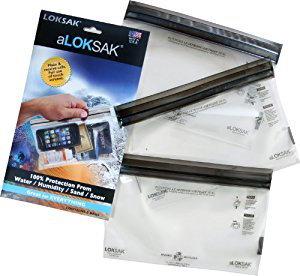
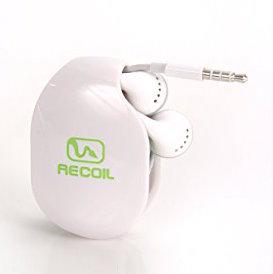
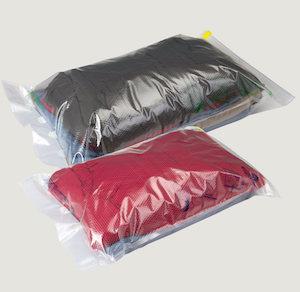
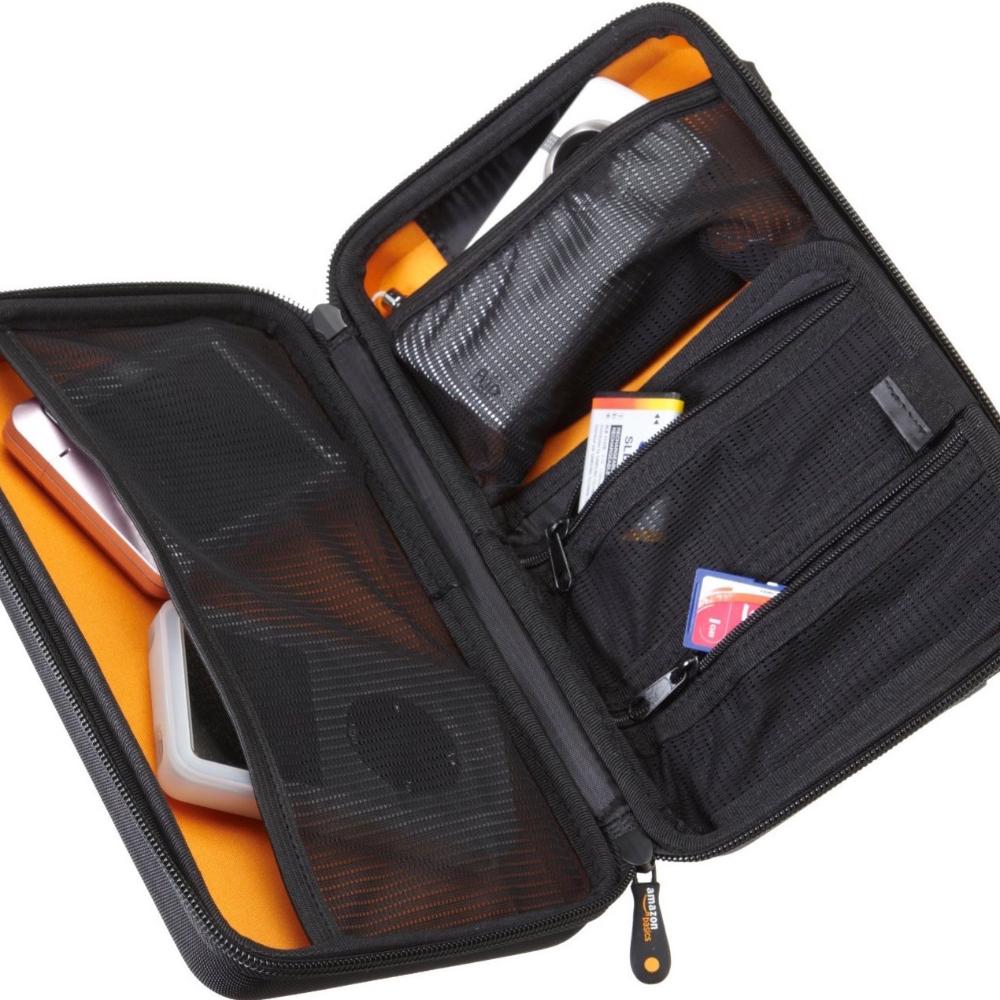
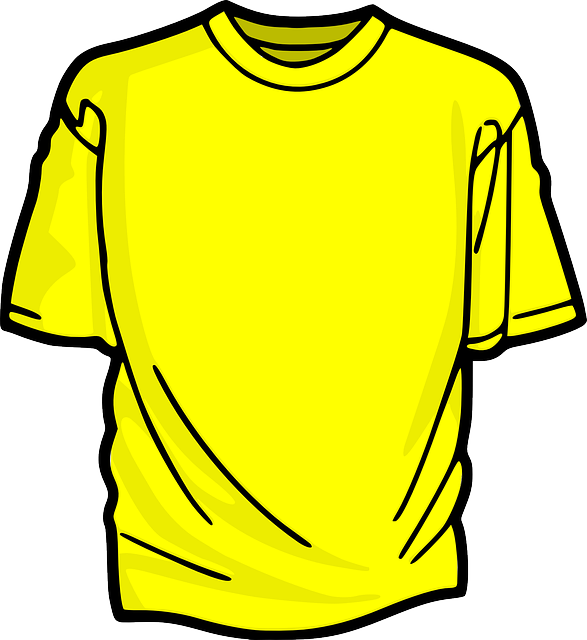
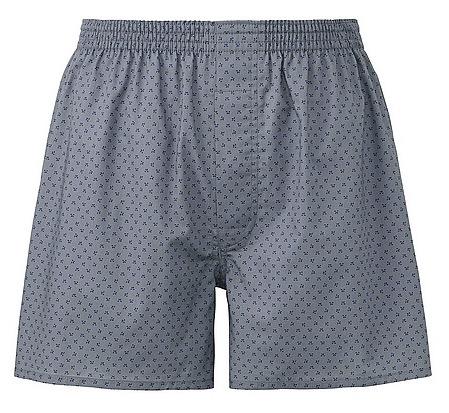
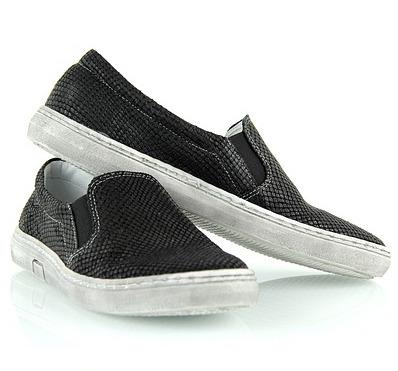
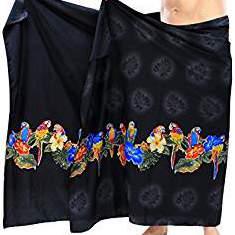
.jpg)
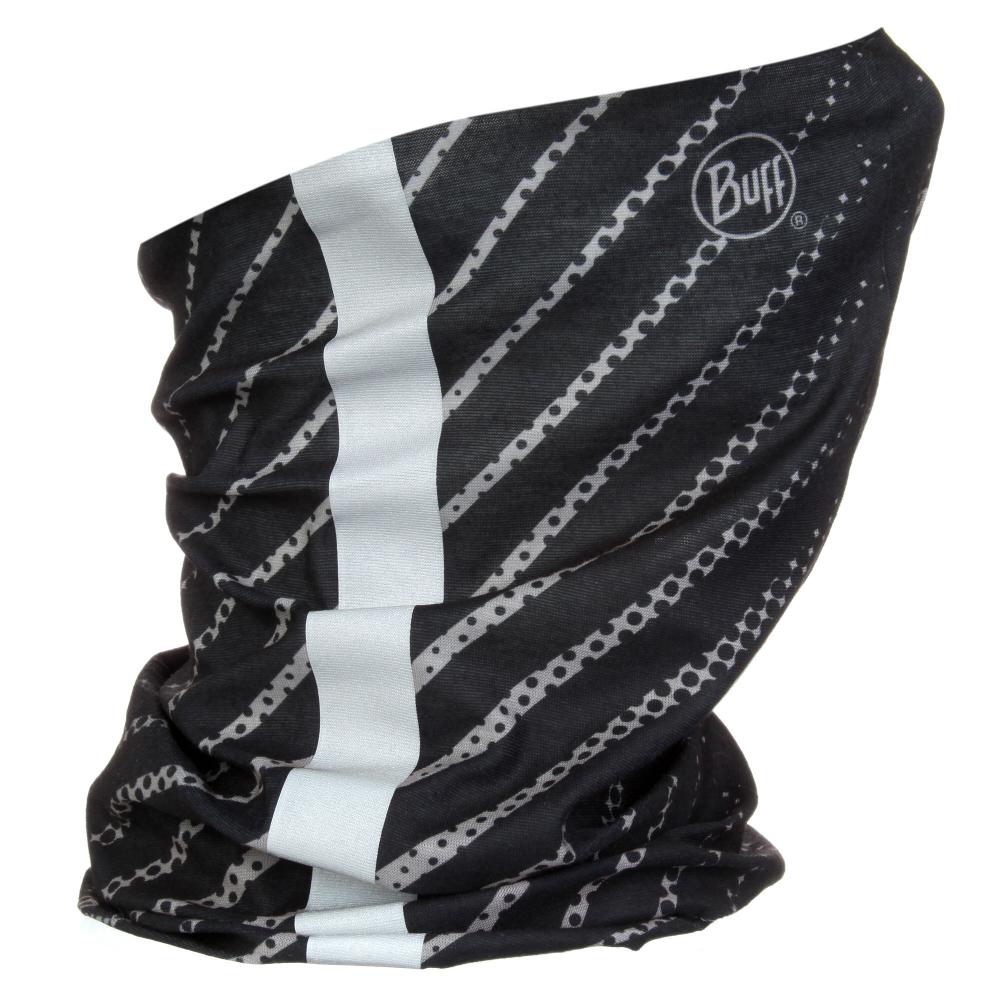
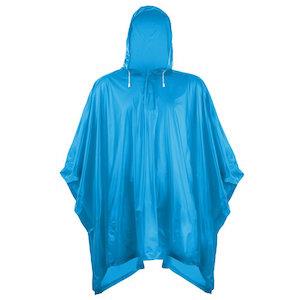
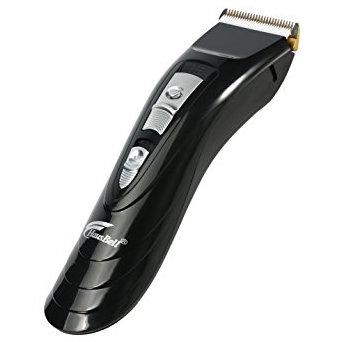
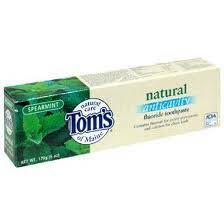
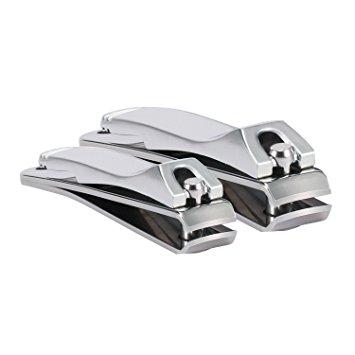
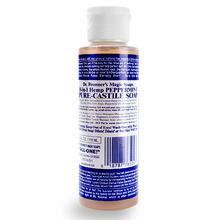
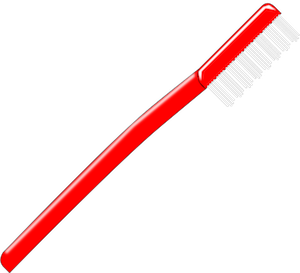
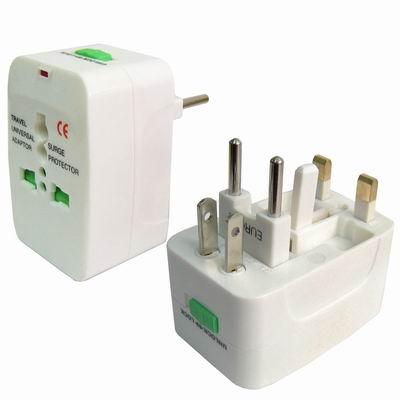
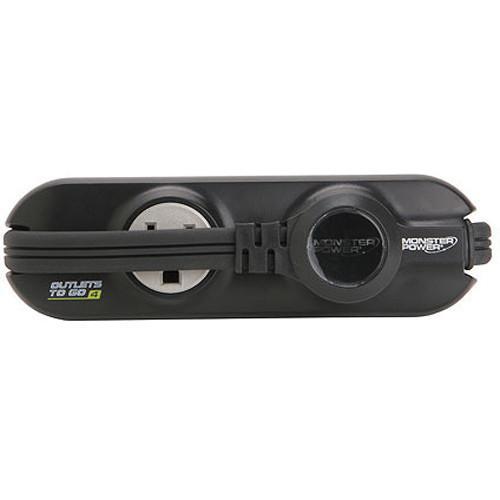
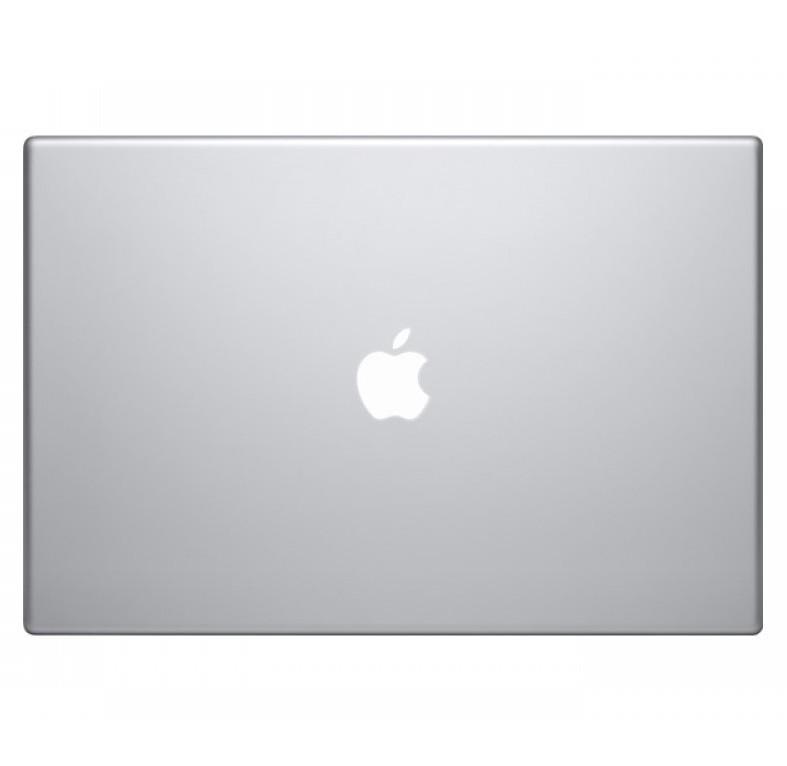
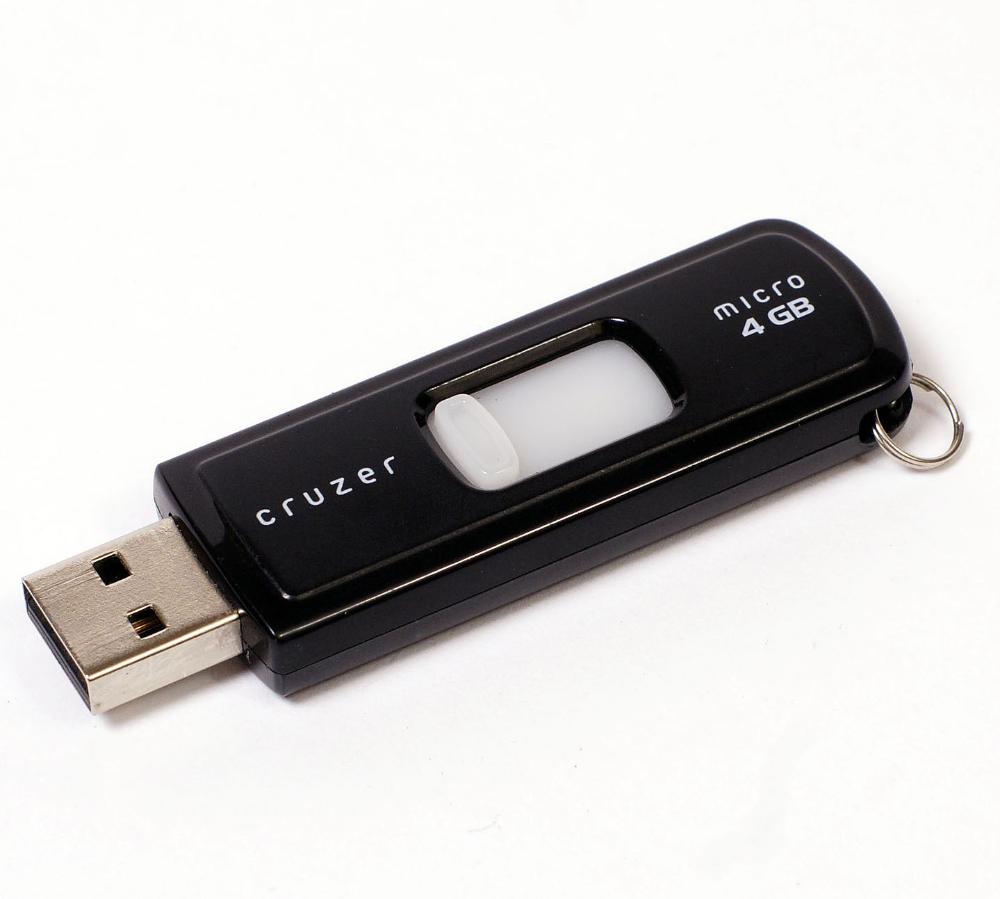
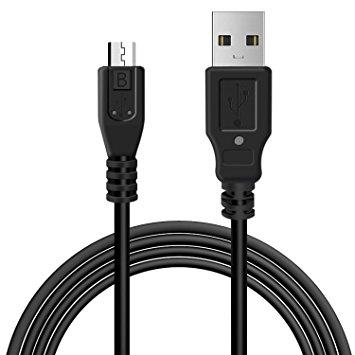
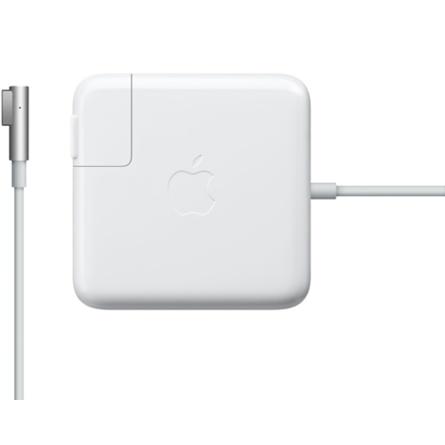
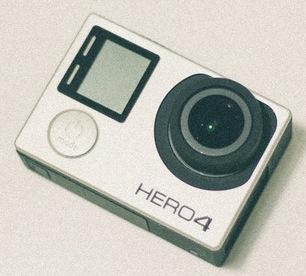
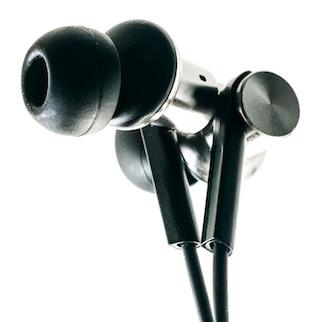
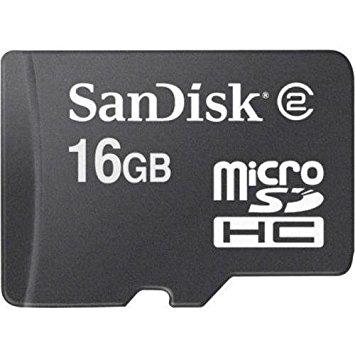
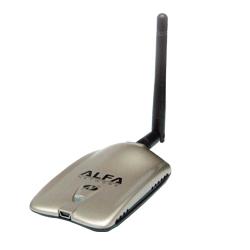
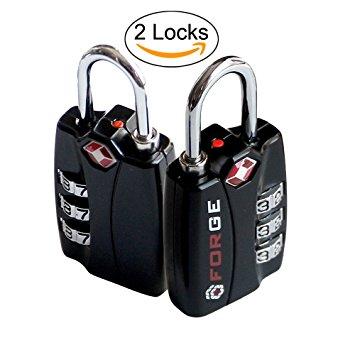
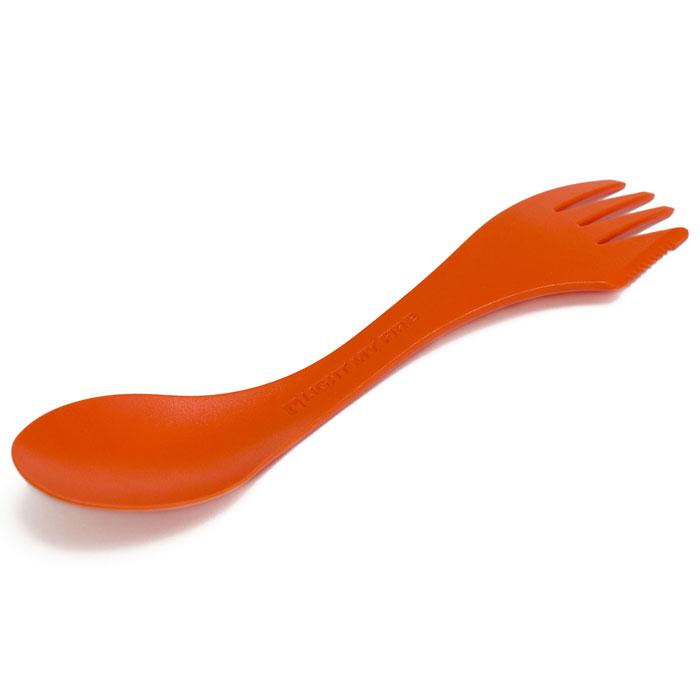
.jpg)
